Article
10 Rx Products Approved This Year
Author(s):
These newly approved Rx products should appear in your pharmacy soon, if they haven't already.
These newly approved Rx products should appear in your pharmacy soon, if they haven’t already.
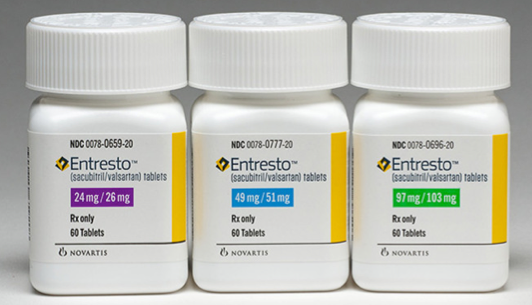
(Novartis Pharmaceuticals)
Marketed by: Novartis Pharmaceuticals Corporation
Approved: July 7, 2015
Indication: This combination of sacubitril and valsartan reduces the risk of cardiovascular death and hospitalization for heart failure in patients with chronic heart failure (NYHA Class II-IV) and reduced ejection fraction. It is usually administered in conjunction with other heart failure therapies, in place of an angiotensin-converting enzyme inhibitor (ACE) or other angiotensin II receptor blocker (ARB). The drug is not recommended for use in patients with histories of angioedema related to previous ACE inhibitor or ARB therapy or in those using aliskiren to treat diabetes.
Dosage Form: Tablets: 24mg/26 mg, 49 mg/51 mg, and 97 mg/103 mg
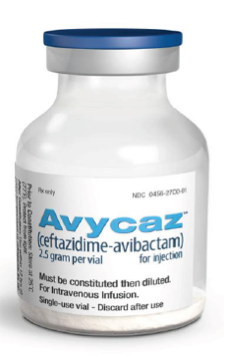
Marketed by: Actavis
Approved: February 25, 2015
Indication: This combination of ceftazidime (a cephalosporin antibiotic) and avibactam (a beta-lactamase inhibitor) is used for the treatment of (1) complicated intra-abdominal infections, in combination with metronidazole, and (2) complicated urinary tract infections, including pyelonephritis, in adults. Each dose should be administered intravenously over 2 hours, with the strength and frequency dependent on the patient’s estimated creatinine clearance.
Dosage Form: Injection: 2/0.5 g in a single-use vial

Marketed by: Boehringer Ingelheim Pharmaceuticals, Inc
Approved: January 30, 2015
Indication: This drug is an adjunct to diet and exercise to improve glycemic control in adults with type 2 diabetes mellitus when treatment with both empagliflozin and linagliptin is appropriate. The recommended dose is 10 mg empagliflozin/5 mg linagliptin once daily, taken in the morning, with or without food. It should not be used for the treatment of type 1 diabetes mellitus or diabetic ketoacidosis.
Dosage Form: Tablets: 10 mg/5 mg and 25 mg/5 mg
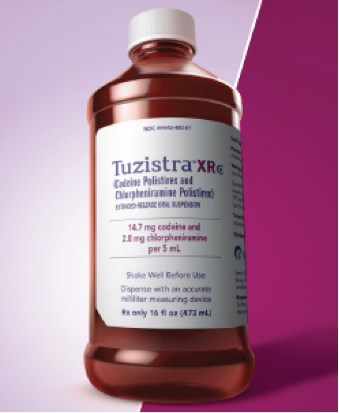
Marketed by: Vernalis Therapeutics, Inc, and Tris Pharma, Inc
Approved: April 30, 2015
Indication: This combination of codeine, an opiate agonist antitussive, and chlorpheniramine, a histamine1-receptor antagonist, is used for relief of cough and symptoms associated with upper respiratory allergies or the common cold. It is not indicated for patients younger than 18 years. The recommended dose in adults 18 years and older is 10 mL every 12 hours, not to exceed 2 doses (20 mL) in 24 hours.
Dosage Form: Extended-release oral suspension: an antitussive—codeine polistirex, which contains 14.7 mg of codeine, and an antihistamine–chlorpheniramine polistirex, which contains 2.8 mg of chlorpheniramine per 5 mL
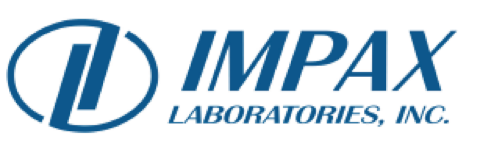
Marketed by: Impax Laboratories, Inc
Approved: January 7, 2015
Indication: This combination of carbidopa (an aromatic amino acid decarboxylation inhibitor) and levodopa (an aromatic amino acid) is used for the treatment of Parkinson’s disease, postencephalitic parkinsonism, and parkinsonism that may follow carbon monoxide intoxication or manganese intoxication. The recommended starting dose for levodopa-naive patients is 23.75/95 mg by mouth 3 times per day, which may increase to 36.25/145 mg by mouth 3 times per day on the fourth day of treatment. The maximum recommended daily dose is 612.5/2450 mg.
Dosage Form: Extended-release capsules: 23.75/95, 36.25/145, 48.75/195, and 61.25/245 mg
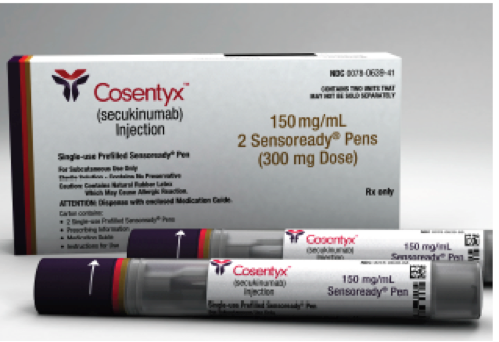
Marketed by: Novartis Pharmaceuticals
Approved: January 21, 2015
Indication: This human interleukin-17A antagonist is used for the treatment of moderate to severe plaque psoriasis in adult patients who are candidates for systemic therapy or phototherapy. The recommended dose is 300 mg by subcutaneous injection at weeks 0, 1, 2, 3, and 4, followed by 300 mg every 4 weeks. A dose of 150 mg may be acceptable for some patients.
Dosage Form: Injection: 150 mg/mL solution in a single-use pen or prefilled syringe, or 150 mg of lyophilized powder in a single-use vial for reconstitution
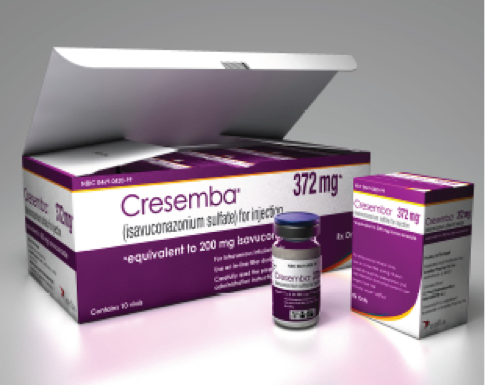
Marketed by: Astellas Pharma
Approved: March 6, 2015
Indication: This azole antifungal treats invasive aspergillosis and invasive mucormycosis. The recommended loading dose is 372 mg orally (2 capsules) or intravenously (1 reconstituted vial) every 8 hours for 48 hours, while the recommended maintenance dose is 372 mg orally or intravenously once daily, starting 12 to 24 hours after the last loading dose.
Dosage Form: Capsules: 186 mg; Injection: 372 mg in a single-use vial
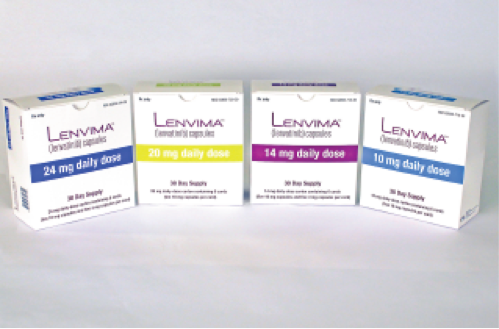
Marketed by: Eisai, Inc
Approved: February 13, 2015
Indication: This kinase inhibitor is used to treat patients with locally recurrent or metastatic, progressive, radioactive iodine—refractory differentiated thyroid cancer. The recommended dose is 24 mg by mouth once daily. In patients with severe renal or hepatic impairment, the dose is 14 mg by mouth once daily. Because of the potential for serious adverse reactions in nursing infants, women should be advised to discontinue breast-feeding during treatment with Lenvima.
Dosage Form: Capsules: 4 and 10 mg
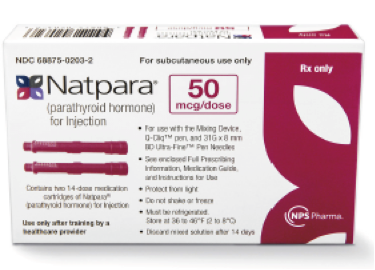
Marketed by: NPS Pharmaceuticals, Inc
Approved: January 23, 2015
Indication: This parathyroid hormone is an adjunct to calcium and vitamin D to control hypocalcemia in patients with hypoparathyroidism. The dose should be individualized to achieve a serum calcium level in the lower half of the normal range. Before it is started, vitamin D stores must be sufficient and the serum calcium level above 7.5 mg/ dL. The starting dose is 50 mcg injected once daily in the thigh, and the dose of active vitamin D should be decreased by 50% if the serum calcium level is above 7.5 mg/dL.
Dosage Form: Injection: 25, 50, 75, or 100 mcg
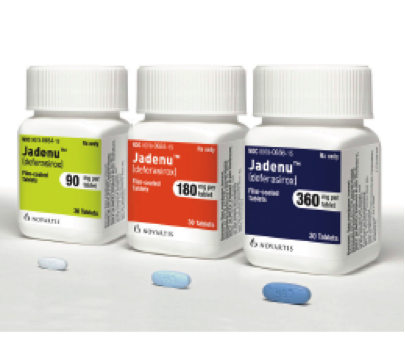
Marketed by: Novartis Pharmaceuticals Corporation
Approved: March 30, 2015
Indication: This iron chelator is used to treat (1) chronic iron overload due to blood transfusions in patients 2 years and older and (2) chronic iron overload in nontransfusion-dependent thalassemia syndromes in patients 10 years and older. The full prescribing information includes a black box warning for renal failure, hepatic failure, and gastrointestinal hemorrhage.
Dosage Form: Tablets: 90, 180, and 360 mg





